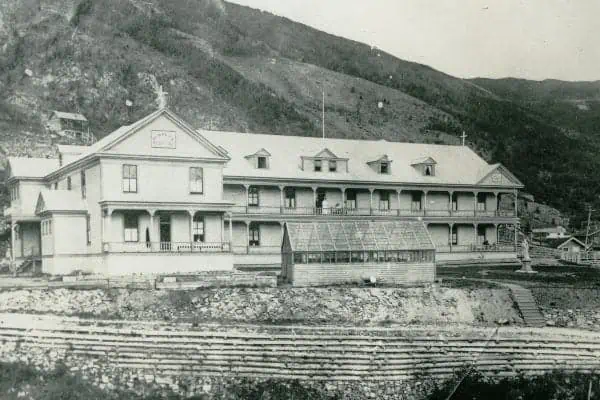Tiss Clark, a local artist and music teacher, is the organizer of the Community Jigging Square Dance Project in Dawson City. She decided to start the project after hearing an elder in Fort MacPherson recount dance history in the North. “Dances used to be for meeting, talking, and socializing with the community,” says Clark. “There’s a history of that here.”
During the 1800s, Hudson’s Bay Company traders, coming from Scotland, Ireland, and Frenchspeaking Canada brought music with them to the North. The First Nations integrated the music and dance culture into their own, creating a tradition of jigs and square dancing to old-time fiddle music. Clark got start-up funding from the American Country Dance and Song Society to organize monthly dances, partnered up with the Tr’ondek Hwech’in First Nation in Dawson and invited the local fiddlers group and jigging group to join in. The next community dance will be held on May 9.
Running the local fiddlers group is Peter Menzies, Robert Service High School’s tech-ed and music teacher. He is also president of the North Klondike Highway Music Society. Because he believes strongly in music education and the value of music in a community, he had the idea 10 years ago to encourage the tradition of fiddling in Dawson.
The current club has seven youth and three tutors, with three volunteer musicians to help out during performances.
Menzies sees the community dance as a forum to perform and a way to engage with others. “Dances stopped with TV, records, and when there were other things to do,” says the fiddle, guitar, and banjo player. “You can’t replace the modern distractions, but I’d like to see the tradition of fiddling being made a part of life, to see it grow where it belongs.”
Menzies points out that learning the songs a certain way is in itself a tradition. Dancers are particular in how they want to hear the tunes, and fiddlers need to learn them that way. “[The whole thing] gives meaning to me because it’s honouring a tradition,” he says.
As the saying goes, where there’s fiddling, there should be dancing.
Victor’s Jigging Club started when, five years ago, local First Nations’ Elder Victor Henry wanted people to remember and learn local traditional dances. In response, Tr’ondek Hwech’in partnered with the Recreation Department of Dawson City to start an after-school jigging club. They named it in his honour.
Ashley Bower-Bramadat, community education liaison coordinator for the Tr’ondek Hwech’in Department of Education, has been involved with the club for three years. “The Tr’ondek Hwech’in do singing and drumming, but didn’t do much jigging until the club started,” says Bower-Bramadat, who also participates in the dancing. “Some knew the dances but never practiced, but all the kids know the dances are their community culture.”
Members are mostly children from Grades 1 to 5. The group practices once a week, with the older kids teaching the younger ones the moves and the background of jigging. At present count, there are eighteen children involved, half of whom are First Nations.
The group performs at events such as Tr’ondek Hwech’in feasts, first hunts, the Moosehide gathering, school functions, and Christmas concerts. Some of the traditional dances they perform at these events are the circle dance, the red river jig, and the handkerchief dance. They are also practicing a new dance this year, but only after they got the nod from Victor. “We don’t do anything unless he’s okay-ed it first,” says BowerBramadat with a smile.
While all three feel that the community dances held so far have been successful, Clark, Menzies, and Bower-Bramadat are particularly excited about the upcoming dance on May 9.
Three traditional fiddlers have agreed to stop in to Dawson to play at the dance before heading up to Old Crow to perform. Ed Peekeekoot, Gerald Edzerza, and Keitha Clark are all skilled and seasoned performers and will be celebrating and sharing their music and the tradition of the community dance.
As for long-term plans, Victor’s Jigging Club’s next goal is to travel to other communities so that dancers can learn different traditional dances from each other and exchange moves. They are already planning a trip to Pelly Crossing.
Menzies hopes to encourage other fiddling communities to come to the Moosehide Gathering in 2016 and have a large dance and traditional celebration involving everyone. He also hopes that one day, “youth will think of the community dance as a cool thing.”
As for Clark, who brought them all together, her dream is to continue to hold a monthly dance that helps build community and shares intergenerational experiences, knowledge, and skills through live music and dance.
The dance is being held at the Tr’ondek Hwech’in Community Hall, starting at 6:30 p.m. on May 9. Admission is by donation.




